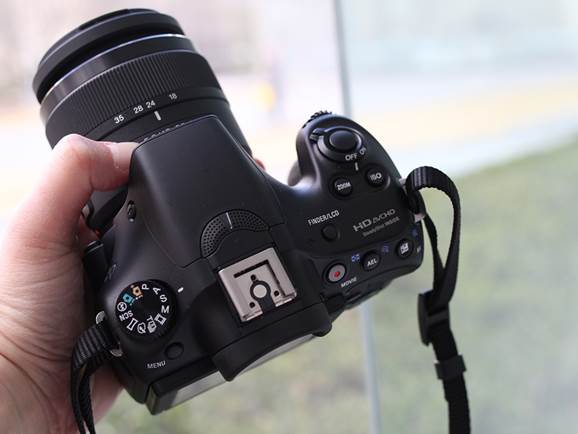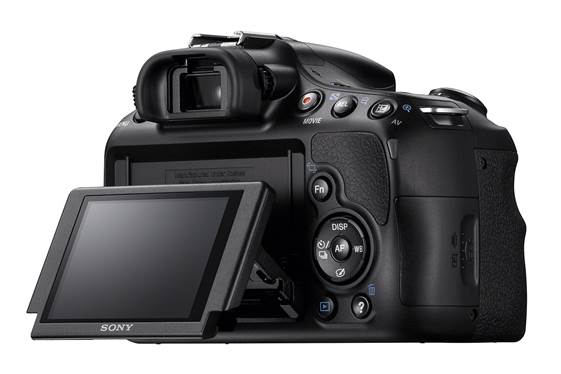The Alpha 58 is Sony’s entry-level DSLT (Single-Lens
Translucent) camera. Sony’s proprietary SLT technology brings with it certain
advantages and disadvantages, which could work for or against you depending on
how the viewfinder is used.
Unlike a conventional DSLR, the mirror inside a DSLT camera
is fixed and doesn’t flip up when taking a shot or using Live View on the rear
monitor. That means that even when in Live View, the camera can redirect light
to the phase detection AF sensor and you still get quick autofocus performance.
While it was revolutionary for its time, DSLRs today have caught up; Canon’s
Dual Pixel and Hybrid AF systems offer decent AF in Live View modes on their
latest DSLRs.

Sony Alpha 58
The disadvantage with DSLT technology is that the viewfinder
must always be electronic. The state of EVF (electronic viewfinders) today is
that only the best are decent replacements for optical viewfinders, you have to
shift to an advanced camera like Sony’s A7 series to get EVFs which can
substitute for OVFs (optical viewfinders). Unfortunately, the A58 is an
entry-level model, and thus the EVF is small, dark and makes you feel like
you’re watching the world through a flickering TV.

Sony Alpha 58 Digital Camera
Even if you prefer to shoot through the rear monitor like
with a compact camera, the one on the A58 feels cramped at 2.7” with only
460,800 dots of resolution. In contrast, the Canon 100D entry-level DSLR has a
3” rear monitor with 1.04 million dots of resolution. The A58 has a tilting
screen, but we’d rather have the luxury of more real estate to view the scene
and review images.
On the plus side, the A58 gives you the ability to quickly
change settings with an overlay menu using the Function button, which is
available even when using the EVF. We also like how Sony shows you the
remaining battery life in percentage, which is more indicative than just using
battery bars. It’s irritating however, how the black 15 AF points permanently obscure
your view of the shooting scene without an option to turn them off.
The A58 can shoot up to ISO 800 rather cleanly, and while
ISO 1600 still looks decent, when you zoom in you start to see pixilation
artifacts. At ISO 3200 details mush together and the pixilation makes images
look splotchy in dark areas, with a noticeable amount of chroma noise in
clearer areas. In good light, the A58’s performance is uneven, with some colors
looking flat.

The A58 has a tilting screen but not
a lot of real estate at 2.7”
Sony’s DSLT technology may have been revolutionary in 2010,
but the problems it was designed to solve have largely been handled by modern
mirrorless system cameras and DSLRs with hybrid AF systems, which can also
autofocus decently in Live View and provide a good EVF experience. With its
lackluster ISO performance, there’s no compelling reason to get the A58 over
its competitors.
Specifications
·
Sensor: 23.2 x 15.4mm
·
Image Stabilization Stills: Image sensor-shift, Movies:
Electronic
·
ISO Sensitivity: ISO 100-12,800 (expandable to ISO
25,600)
·
LCD Monitor: 2.7”, 460,800-dot TFT
·
Built-In-Flash: GN10 (in meters at ISO 100)
·
Shutter Speeds: 1/4000 to 30 sec, Bulb
·
Flash Sync Speed: 1/160 sec
·
Viewfinder: 1cm electronic viewfinder, approx. 0.88x
magnification
·
Battery Life: Approx. 690 shots (viewfinder), 700 shots
(LCD monitor)
·
Weight: Approx. 492g (body only)
·
Megapixels: 20.1MP
·
Dimensions: 128.6 x 95.5 x 77.7 mm
·
Price: $749
|